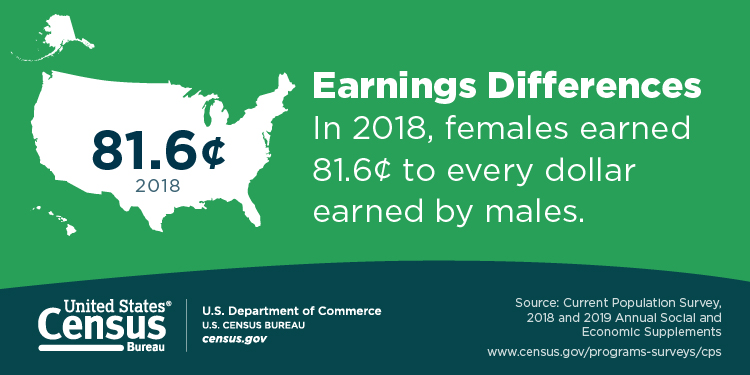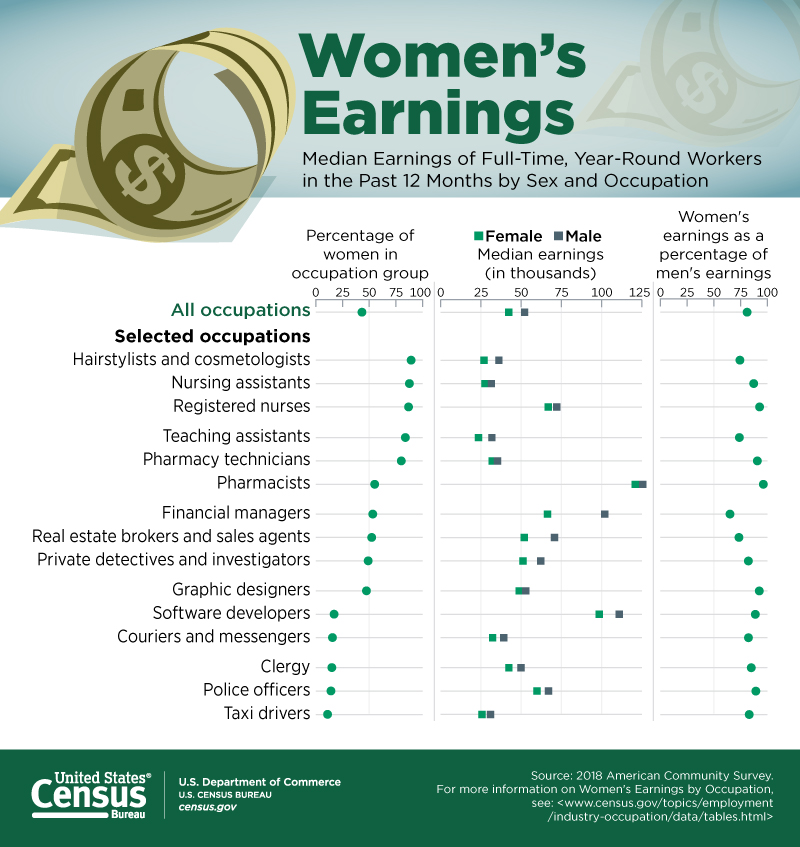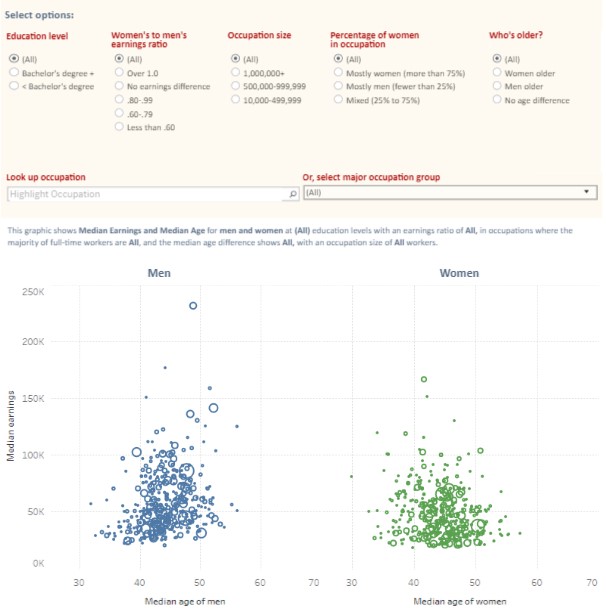Women Still Have to Work Three Months Longer to Equal What Men Earned in a Year
For the first time and the earliest since its inception, Equal Pay Day – how far into the year women must work to equal what men earned the previous year – is March 31, a sign that the gender pay gap is narrowing.
The U.S. Census Bureau’s Current Population Survey Data tracks the median earnings of full-time, year-round workers used to calculate Equal Pay Day.
Originated in 1996 by the National Committee on Pay Equity (NCPE), the Equal Pay Day initiative spotlights the gap between men's and women's wages.
At the current rate, it will take until 2059 for women to achieve equal pay.
At its lowest point in 1973, full-time, working women earned a median of 56.6 cents to every dollar that full-time, working men earned. Since then, women’s median earnings have gained 25 cents, reaching 81.6 cents in 2018.
This pay gap is costly.
NCPE estimates that “over a working lifetime, this wage disparity costs the average American woman and her family an estimated $700,000 to $2 million, impacting Social Security benefits and pensions.”
At the current rate, it will take until 2059 for women to achieve equal pay.
The gender pay gap has been studied extensively over time. No one factor, discriminatory or nondiscriminatory in nature, accounts for 100% of the pay gap. Researchers often rely on Census Bureau data to generate insights.
The Pay Gap Over Time
For about 20 years, through the 1960s and 1970s, the female-to-male earnings ratio was stagnant, hovering between 57 to 61 cents to the dollar of male earnings.
During the 1980s, the pay gap narrowed nearly 10 cents, marking the most income gain in any decade. It took nearly another 30 years for women to gain the next 10 cents to reach 2018’s ratio of 81.6 cents on the dollar.
Current Population Survey data from 1961-2018, show how the female-to-male earnings ratio of full-time workers has narrowed over seven decades.
Equal Pay Day Comes Later For Many Women
The gender wage gap varies depending on women’s education, race and whether they are married or have children, among other factors.
For example, tables from the Bureau of Labor and Statistics (BLS) show women who were never married (90%) experience less of a gap compared to women who are in mid-life (75%), Latina (86%), hold a bachelor’s degree or higher (75%) or are separated (78%).
The gender-based pay gap narrows for blacks (89%) — though black workers have a lower median income overall — and all women 16-34 years of age (91-87%).
American Community Survey (ACS) data on single parents show that single mothers who earn less than $30,000 a year make up 51% of all single mothers while single fathers in the same income category make up 29% of their cohort.
More Education, Wider Wage Gap
According to American Community Survey data, while overall wages rise with education, the pay gap broadens for women with higher levels of education. Detailed tables from 2018 BLS data show full-time, working women with a bachelor’s degree and higher only earn 75% percent of what their male counterparts do.
This phenomenon may be a reflection of factors related to age and experience as women workers with a bachelor’s degree are younger on average.
Wage Gap Exists, No Matter the Occupation
Whether women are the majority, equally represented or the minority percentage of the workforce within a particular occupation sector, the wage gap persists.
But for select occupations, such as graphic designers and pharmacists, the gender pay gap has nearly closed.
A new Census Bureau data visualization shows median earnings of full-time, working women compared to men while accounting for the percentage of women in certain occupation groups.
Wage Gap Across Occupations with a Female -Majority
Analyzing the pay gap within occupations is complex.
Women make up two thirds of hourly-wage workers who earn below minimum wage but make up slightly less than half of the workforce as a whole.
Occupational segregation occurs when women are funneled into lower-wage occupations, which drive down women’s median earnings.
The pay gap exists in occupations within all pay and education levels.
The Census Bureau created an interactive visualization tool that allows an analysis of the pay gap by occupation while filtering for variables such as occupation size, education level and the ratio of women to men in an occupation. Use it to explore where an occupation of interest stands on pay equality.
Mary Leisenring is a program analyst at the U.S. Census Bureau.











